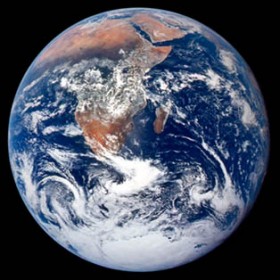 The most common comment at Crossroads this time of year is: when will it be spring? Waiting for spring is not like waiting from Christmas or your birthday. When an event occurs at the same time every year, we can count the days. We know. In the case of spring….as in “growing season spring” ….like flowers and birds and balmy breezes….. we have no clue.
The most common comment at Crossroads this time of year is: when will it be spring? Waiting for spring is not like waiting from Christmas or your birthday. When an event occurs at the same time every year, we can count the days. We know. In the case of spring….as in “growing season spring” ….like flowers and birds and balmy breezes….. we have no clue.
Astronomical spring, on the other hand will absolutely arrive this year on March 20 at 15:57 Universal Time. That’s pretty darn precise, but astronomers have been calculating this event for thousands of years. Just don’t expect to see your tulips blooming just because the calendar says “spring begins.” Astronomers aren’t saying that.
Most people understand that when the North Pole of the Earth tilts toward the sun, we have summer. When the North Pole tilts away from the Sun, we have winter. The transition times, we call spring and fall. On the 2oth of March, this year, the North Pole is not tilting toward or away from the Sun. The length of day and night are just about equal.
When we demonstrate this in the planetarium at our Astronomy Campus at Crossroads, we can project a nice dotted line called the “ecliptic”on the dome ceiling. This dotted line (which also appears on most star charts) shows the path of the Sun as seen from the Earth. In the real sky, this is the celestial equator, the apparent path of the sun by day, and the area of the sky in which we see planets by night. On March 20, the Sun will cross the ecliptic into the northern celestial hemisphere. And we on Earth won’t notice a thing.
But that same night, March 20, something rather odd will happen in the night sky. If there are no clouds to hide the event, to viewers on Earth, the bright star Regulus will disappear at about 1:07 AM and then reappear 14.3 seconds later. this brief “blink-out will occur because, coincidentally, on the same day as the equinox, an asteroid will pass directly between the Regulus and the Earth. Professional and amateur astronomers are excited because this occultation will help them learn more about the shape of Asteroid 163 Erigone. Am I staying up for this one? Probably not, even if skies are clear. But I will look for signs of spring.
Robins are lousy indicators of spring. In fact, we’ve had a small flock of robins hanging around Big Creek most of this winter close to Angie’s Trail. Presumably, they’ve been living on fruits and berries. But the first male red-winged blackbird or the cry of the killdeer? Now that might give me hope.
And “sap-cicles”–I’m not sure if that is a real word, but you know those little icicles that hang from the twig tips of maple trees? You may not notice them, the squirrels (both gray and red) will be high in the trees celebrating spring by sipping the sweet sap that is finally flowing.
In melting snow, if the temperature is just right, you may see thousands of tiny jumping insect-like creatures, aptly called springtails, but commonly called snow fleas. Don’t worry. They aren’t fleas, they don’t get on humans or pets, and they don’t suck blood or cause itching. Apparently, they’d rather eat pollen, decaying fungus, sap oozing from trees and (yum!) insect droppings. But if you see them, you’ll know spring is almost here.
Listen for the mate song of the chickadee- the two-note phrase that to me says “Spring’s here.” Truth is, chickadees announce spring long before it really arrives. The start of spring is not instantaneous like the occultation of Regulus. In fact, it’s probably better if spring eases in slowly. We know that winter is necessary for many trees, flowers, seeds, insects, and animals. Winter is a good thing. And the best thing about it is: that eventually, it ends.

